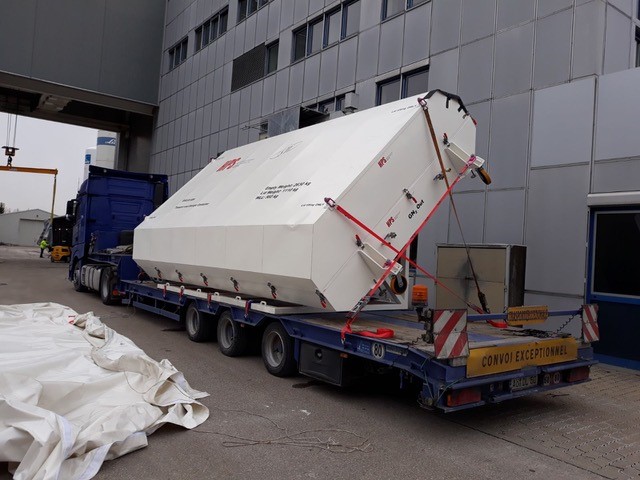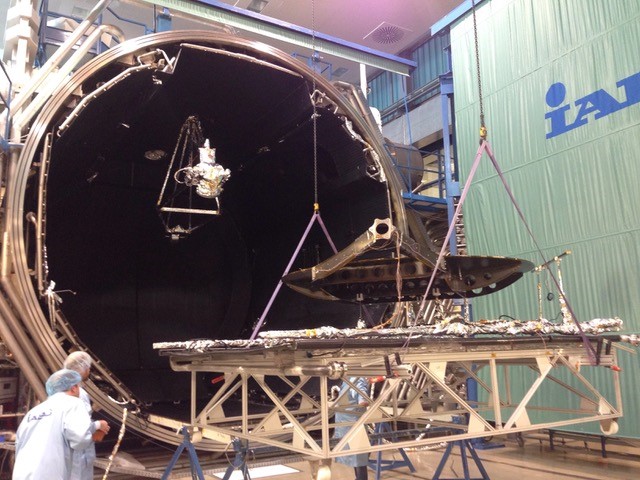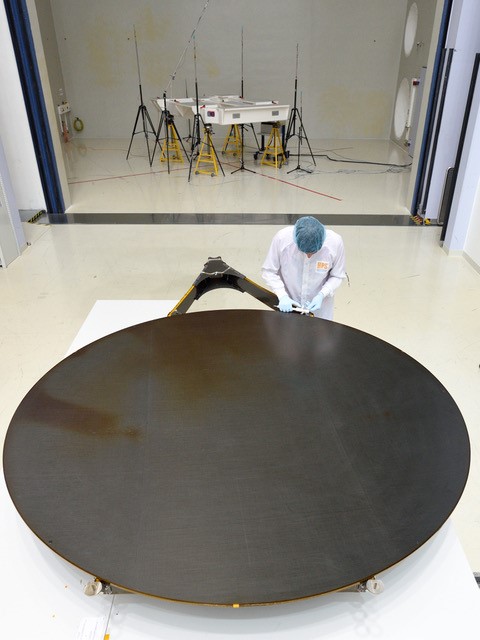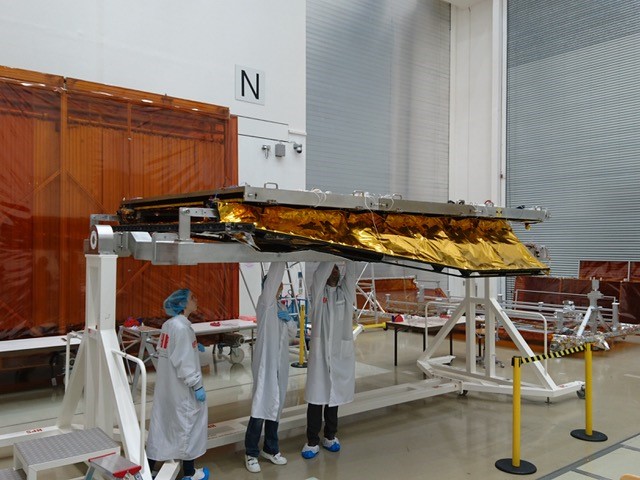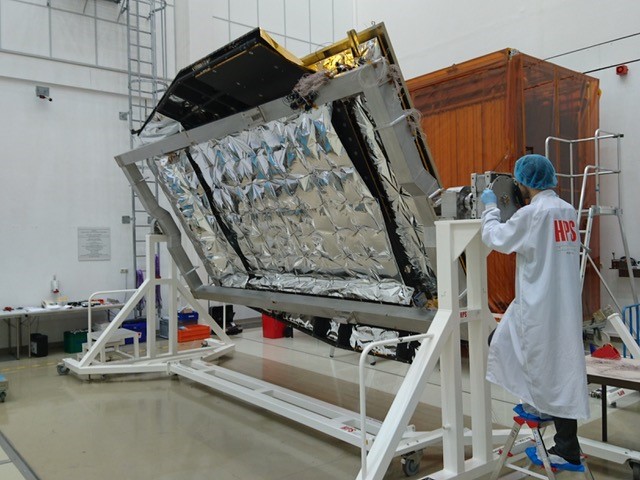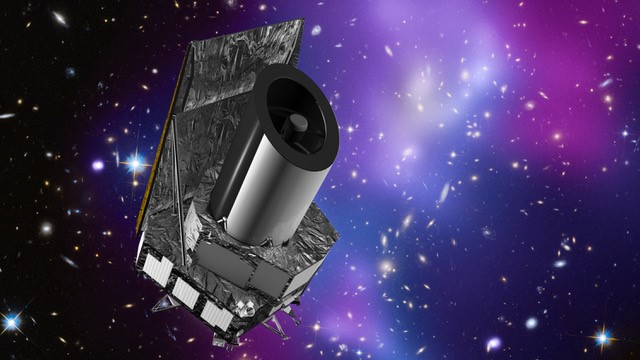March 2018
Integration and Tests at IABG
Two Huge HPS Spaceprojects Hitting the Home Stretch
Inside the facilities of Europe´s highly renowned IABG-space testcenter in Munich these weeks in March 2018 the logo of HPS is almost everywhere. With HPS Germany and HPS Portugal two out of three sites of the European specialist for space subsystems are running simultaneously integration and testing campaigns to qualify their contributions for two major European space projects: the EUCLID mission and the strategicly important development of an extremely precise large antenna reflector made in Europe.
EUCLID is an ESA mission to map the geometry of the Dark Universe. The mission will investigate the distance-redshift relationship and the evolution of cosmic structures by measuring shapes and redshifts of galaxies and clusters of galaxies out to redshifts ~2, or equivalently to a look-back time of 10 billion years.
In order to perform this job that has never been done before in space HPS Lda of Portugal has been assigned by the German SME Spacetech (STI) one of the the missions´s challanging task to develop, produce and integrate highly efficient MLI for the thermal insulation of spacecraft´s 4m tall sunshield (EUCLID-SSH). In addition, in order to enable a fluent assembly process of the whole sunshield, the responsible teams of HPS Portugal have developed a reliable MGSE, an “Integration and Turning Stand” that allows turning the sunshield at 180 degrees and later also the Integration of solar arrays.
In total, the HPS-Group holds six contracts for special contrubutions to ESA´s huge EUCLID project. Among others and besides the MLI-part for the sunshield, the Ka-band antenna reflector assembly (EUCLID-ARA) has been contracted to HPS Germany; the Qualification Model is currently in the final assembly process.
At the same time at HPS´ long standing partner´s IABG facilities outbaking-, thermal cycling-, thermo-elastic deformation-, vibration-, and acoustic-tests are under way for the newly developed 2.4-meter Q/V-band reflector of HPS Germany on behalf of ESA. The project was launched in 2014, based on a history of that specific HPS-technology reaching back to beginnings in 2003. The design was developed by HPS, the manufacturing and assembly is performed together with its 10% shareholder INVENT. Among the outstanding and innovative features of the reflector are an extremely well balanced relationship of weight and eigenfrequency, very little deformation tolerance in space, applicabile for „big data“-projects in New Space, the business field of the future in space.
While the current testing and integration processes at IABG will be finished by April, a row of several new projects – some of them in the range of multimillion euro-budgets – are waiting for the teams when they return to their premises in Porto and Munich. To mention just three: MLIs for ESA-missions on instrument- and satellite-levels, the new Ka-band antenna for the Heinrich-Hertz mission (contracted by TESAT on behalf of the customers OHB and DLR), and a large deployable sail module for de-orbiting of satellites after its life-time.
